Hisense, even though it has only recently been operating in the Polish market, shows that it can create televisions that have a lot to offer. The model U7NQ stands out with excellent picture quality, thanks to Mini LED technology. The blacks look really good, and the brightness is impressive, which translates to enjoyable viewing both during the day and in the evening. Dolby Vision adds an extra effect here, especially in films with rich details and strong HDR. When it comes to motion fluidity, it's hard to have any complaints. The fast 144Hz panel combined with low input lag and gaming features like VRR and ALLM ensures smooth performance in games and a clear image in dynamic scenes. Even sports look flawless – everything is clear and without blur. On a daily basis, the television performs well. With a high brightness level of 915 nits, it can be used even in bright rooms without much issue. The program recording feature proves useful, allowing for greater flexibility in planning viewing sessions. However, there are minor things that can be annoying. The VIDAA operating system, while running quickly, doesn't offer as many apps as more popular platforms. Notably absent are Tidal and Spotify, which may be a limitation for some. In HDR gaming, the lack of HGiG support causes less precise detail reproduction. When using the TV as a monitor, sometimes font issues can be observed, especially on dark backgrounds. Hisense U7NQ is a television that surprises with its good picture quality and motion fluidity. Despite minor drawbacks, such as a less developed operating system and the absence of HGiG, it will perform well for both everyday viewing and gaming. It’s a solid choice for those looking for a modern device with rich features at an affordable price.
- Matching (Score)
- Our verdict
- TV appearance
- Where to buy
- Contrast and black detail
- HDR effect quality
- Factory color reproduction
- Color reproduction after calibration
- Smoothness of tonal transitions
- Image scaling and smoothness of tonal transitions
- Blur and motion smoothness
- Console compatibility and gaming features
- Input lag
- Compatibility with PC
- Viewing angles
- TV efficiency during daytime
- Details about the matrix
- TV features
- Apps
- Playing files from USB
- Sound
Hisense U7NQ vs Samsung Neo QLED QN95D
Direct compare
U7NQ
Neo QLED / QN95


Panel type: LCD VA
Resolution: 3840x2160
System: VIDAA
Model year: 2024
Complete the survey to find out the result

Panel type: LCD VA (wide viewing angle)
Resolution: 3840x2160
System: Tizen
Model year: 2024
Complete the survey to find out the result

Overall rating
7.3
7.8
Movies and series in UHD quality
7.0
8.0
Classic TV, YouTube
6.7
8.1
Sports broadcasts (TV and apps)
6.4
7.7
Gaming on console
8.2
9.2
TV as a computer monitor
8.0
8.6
Watching in bright light
7.6
6.5
Utility functions
9.0
6.7
Apps
7.7
9.1
Sound quality
6.9
7.0
Complete the survey to find out what fits your preferences
Advantages
Good contrast
High panel brightness - good performance during the day
Very good for gamers, sports - VRR, ALLM 144Hz
Low input lag
Recording function from built-in tuners
Excellent brightness - great for HDR content
Very good contrast
Fantastic choice for gamers (HDMI 2.1 4K@144Hz, low input lag)
Wide viewing angles - unusual for this type of panel
Modern design
Camera included
Disadvantages
Missing some apps - VIDAA system
Font issues with PC
Missing HGiG
No recording support
No DTS format support - may pose a problem for Blu-ray users
Our verdict
Samsung QN95D instantly impressed us. Right from the start, we felt that the Tizen system is intuitive and quick. Quick access to streaming apps like PrimeVideo, Netflix, or MAX, along with the ability to integrate with the SmartThings ecosystem, makes using the television simply convenient. The solar remote is a clever solution – eco-friendly and practical as it allows control of other devices like a decoder (e.g. Canal+) or a soundbar. While watching movies and series, we quickly noticed the significant difference made by MiniLED technology. Thanks to the precisely functioning backlight zones, the image gained incredible depth – as confirmed by our contrast tests. The blacks are truly deep, and bright scenes using HDR stand out with excellent detail despite the absence of Dolby Vision. Additionally, high brightness combined with an anti-reflective coating enables comfortable viewing even in a sunlit room. When we played on this television, we immediately appreciated the low input lag and smooth image. The 144 Hz panel and HDMI 2.1 support guaranteed dynamic and responsive gameplay, regardless of the game. All these features made every gaming session pure pleasure, especially in dynamic titles where precision and lack of delays matter. In terms of design – worth mentioning for this television – the QN95D looks simply fantastic. The slim body, solid central stand, and Ambient Mode, which allows the screen to blend into the room's decor, lend it elegance. The included camera is an interesting addition that can be useful during video calls or when using interactive apps – like personal training through the Daily+ tab. However, let's be honest, for such an expensive piece of equipment, it wasn't without a few downsides. The lack of a recording function and support for DTS:X audio format may be a problem for users looking for that feature. Nevertheless, the Samsung QN95D is a television that combines exceptional picture quality, functionality, and elegant design. The MiniLED backlight makes a real difference here, especially if we care about deep blacks, high contrast, and excellent brightness. This device is suitable for film screenings, dynamic gameplay, and everyday TV watching.
TV appearance








Contrast and black detail
7.2/10
8.3/10
Local dimming function: Yes, number of zones: 713 (31 x 23)
Local dimming function: Yes, number of zones: 1344 (24 x 56)
Contrast:
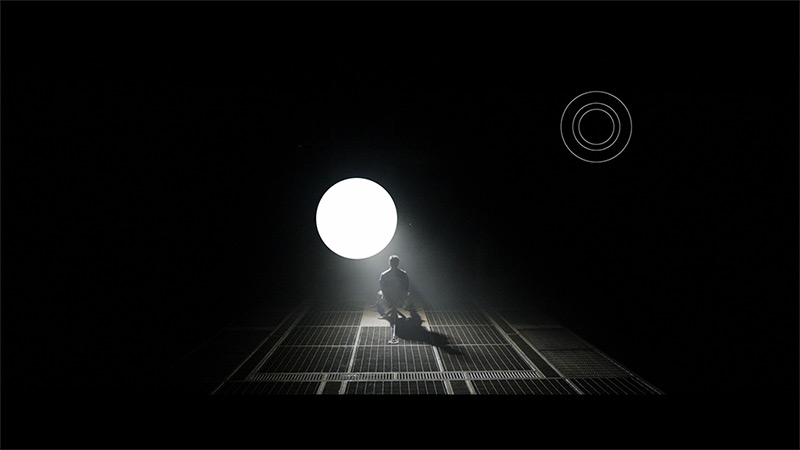
Result
40,750:1
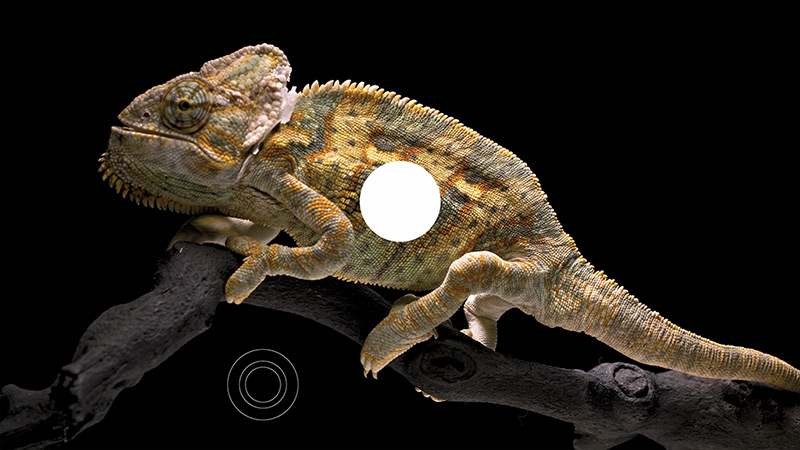
Result
42,600:1
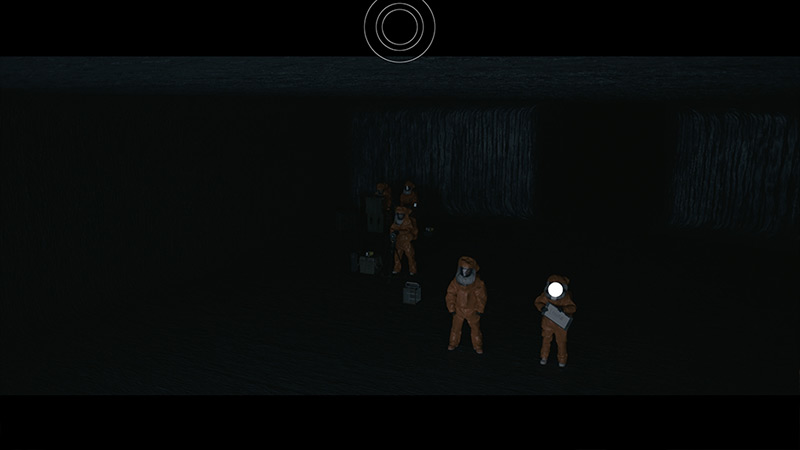
Result
12,000:1

Result
12,150:1
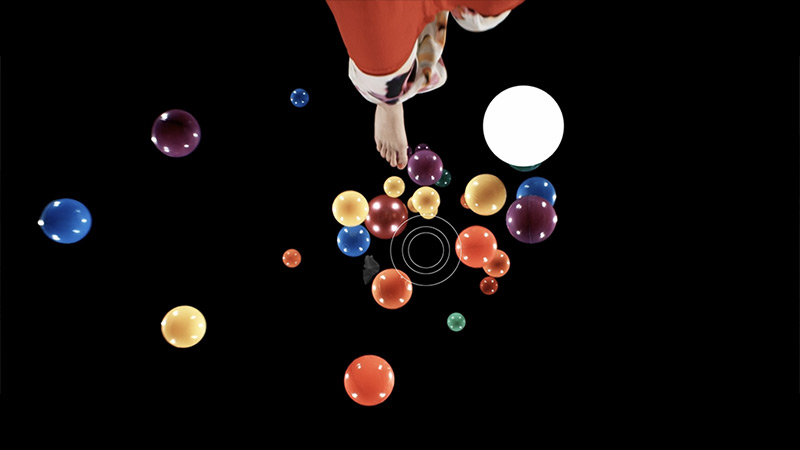
Result
3,450:1

Result
∞:1

Result
218,000:1

Result
61,000:1

Result
10,500:1

Result
4,900:1
Halo effect and black detail visibility:


Hisense U7NQ is a television that uses a VA panel, key for achieving good contrast and appropriate black depth. The use of this technology translates into very vivid picture quality when watching content in a dark room, where blacks acquire the right saturation and resemble deep tar rather than faded ash. Moreover, the television features Mini LED backlighting, which in the tested 65-inch variant offers an impressive number of 713 local dimming zones. Naturally, smaller sizes will have fewer zones, and larger ones more, positively affecting the overall contrast.
In very favorable conditions, the television achieves a contrast level of around 40,000:1. The local dimming technology handles managing bright and dark areas of the image exceptionally well, ensuring that the television faithfully reproduces details in complex scenes. Despite the large number of zones, there can be contrast issues in particularly demanding scenes where small, bright elements are set against a dark background. Sometimes the television may dim these elements too much, causing a loss of brightness, while at other times it may overly brighten them, leading to a halo effect—glows of light surrounding objects. This effect can be noticeable, for example, in a scene from the movie Sicario 2, where bright glows around the titles can be bothersome.
Nevertheless, the use of Mini LED technology with local dimming results in significantly better overall picture quality than televisions without this technology. The effect is particularly noticeable when watching movies in a dark room—blacks are deeper, and contrast is more pronounced, allowing you to fully appreciate the details hidden in dark shots.
Samsung QN95D is a television that certainly catches the eye thanks to its use of a VA panel and innovative Mini LED backlighting. This model stands out with an impressive count of 1344 local dimming zones, providing an exceptional level of contrast and depth of black. It's worth noting that the number of backlighting zones can vary depending on the screen size — in larger models, these zones naturally increase, allowing for even better performance in terms of contrast and black levels. Mini LED, with smaller diodes, allows for more precise backlight control, significantly enhancing the quality of the displayed image. The tested 55-inch model excels at reproducing details, and its ability to adjust brightness in different parts of the screen results in a phenomenal visual effect. During our tests, Samsung QN95D on the test pattern from the film "Oblivion" surprised us with results that could compete with OLED televisions, offering nearly reference-level contrast. However, how does the television perform in more challenging conditions? In more demanding scenes, the local dimming algorithm may exhibit certain imperfections. In some cases, small bright elements on a dark background may lose a lot of brightness, which we noticed during tests with the Pioneer Kuro test disc. Additionally, when we take a closer look (e.g., a scene from the film Sicario 2), certain flaws become apparent. The television sometimes struggles with brightness optimisation — in some scenes, it dims elements too much, while in others, it brightens the screen too intensely. These phenomena can be noticeable enough to draw the viewer's attention, especially in demanding night scenes. However, if we do not pay too much attention to the mentioned imperfections, Samsung QN95D proves to be one of the best choices in terms of black depth among displays with MiniLED technology.
HDR effect quality
5.9/10
6.7/10
Luminance measurements in HDR:

Result
1023 nit

Result
290 nit
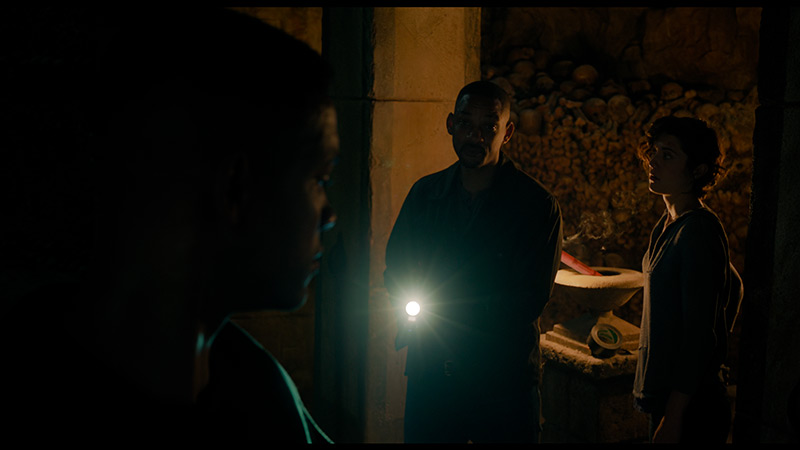
Result
637 nit

Result
198 nit

Result
907 nit

Result
1798 nit

Result
542 nit

Result
805 nit

Result
269 nit

Result
1528 nit
Scene from the movie “Pan” (about 2800 nits)


Scene from the movie “Billy Lynn” (about 1100 nits)


Static HDR10


Dynamic: Dolby Vision
Dynamic: HDR10+


HDR luminance chart:
Samsung Neo QLED QN95D
HDR luminance
Hisense U7NQ
HDR luminance
The Hisense U7NQ 65 television showed impressive capabilities on the luminance chart, surpassing the 1000 nit barrier and achieving very high brightness scores effortlessly in the first, third, and fifth test scenes. However, just like before, in the second and fourth test scenes, such as from the film Sicario 2, there are significant issues with maintaining brightness, and results around 200 nits are very disappointing. Despite the large number of dimming zones, the algorithm in the television that controls these zones is unable to respond adequately — in this case, it strongly dims small elements like the moon or the light from a helicopter. Bright light that should dazzle us is too dim to be considered an HDR effect. Nevertheless, the television deserves praise for its high coverage of the DCI-P3 colour gamut, at 96%, which allows it to accurately render most film scenes.
Samsung QN95D handles HDR exceptionally well, achieving peak brightness around 2000 nits. In tested movie scenes where the screen is fully illuminated, the TV delivers intense and realistic HDR content reproduction, significantly enhancing the quality of visual experiences. However, similar to the contrast, the dimming algorithm can sometimes exhibit limitations. Despite a significant number of Mini LED zones, the TV won’t amaze users with incredible lighting. For example, in scenes from "Life of Pi," where a bright moon appears against a dark background, and in segments of "Sicario 2," featuring intense lighting effects on a dark backdrop, the TV shows very poor performance. During such moments, the TV attempts to reduce the halo effect by dimming the image to a level reminiscent of SDR quality. This results in deep and uniform blacks, but at the cost of losing some details in bright areas. It’s a compromise aimed at maintaining the best possible black quality, although it does make the image lose some of its dynamism. Despite some flaws in the local dimming algorithm's performance, this TV deserves praise for its wide coverage of the DCI-P3 colour gamut. This is made possible by the use of a quantum dot coating, also known as QLED technology, which allows for vibrant and rich colours.
Factory color reproduction
6.4/10
5.9/10


Factory Mode
After calibration


Factory Mode
After calibration
The Chinese manufacturer offers various picture settings in its televisions, but the best mode in this model is undeniably the Filmmaker Mode. Despite its name, this mode has its issues: the white balance, although roughly correct, is characterised by a strong dominance of warm tones due to the prominence of red hues, both in 4K and HD material. The Colour Checker test confirms these errors — deviations in samples can be seen in improper shades. As for brightness characteristics, the gamma responsible for HD material shows values below 2.4, which leads to some screen brightness. Meanwhile, the EOTF curve shows the television's problems with displaying small light elements, as confirmed by the previously described paragraphs.
In the category of factory colour reproduction, the Samsung QN95D television has been tested in Filmmaker mode, which offers the best settings from the manufacturer. However, it is not entirely free of flaws. For HD content, there is a significant colour discrepancy, particularly in the white balance, where the red colour clearly dominates the graph. The situation improves with 4K HDR content, but there are still significant drops in blue colour reproduction. These effects can be observed in a scene from the film "Star Wars," where the main character is rendered in overly warm tones.
In terms of contrast, the gamma graph shows a large initial spike, indicating that the television effectively highlights the brighter parts of the image. However, at the end of the graph, we notice a significant drop, which may mean that details may be lost in darker tones. This shape of the gamma curve can affect how users perceive dark scenes, where some details may become too blurred or too dark, causing the image to lose clarity. It's also worth noting the curve corresponding to brightness (EOTF), which is quite correct, except for the initial drop.
Although the Samsung QN95D boasts impressive specifications and advanced technologies to earn the title of one of the best televisions on the market, it requires some improvements in colour reproduction and contrast to fully realise its potential.
Color reproduction after calibration
7.8/10
8.9/10




Hisense TVs offer a range of image correction tools that allow you to adjust settings to your own preferences, which is why we decided to use these capabilities to bring the image quality closer to reference standards. In terms of white balance, we were able to eliminate the dominance of red, resulting in more neutral colours, which allowed for a more realistic image in both 4K and HD content. We noticed a similar improvement in brightness characteristics. The gamma, which previously led to excessive brightness on the screen, has been corrected, contributing to better detail reproduction in darker areas of the image while maintaining natural tonal balance.
However, the biggest challenge was calibrating the EOTF curve, which is responsible for brightness in 4K content. At first glance, the EOTF value looked almost perfect, but detailed tests revealed somewhat different results. When we looked closer — especially using the filter on the right side of the EOTF chart — we noticed how the TV manipulated 4K film content, often significantly boosting brightness. This effect was particularly noticeable in scenes from films like Pan and Billy Lynn, where the TV attempted to artificially increase the brightness of elements, impacting their naturalness. Despite these imperfections, the calibration yielded positive results, especially in terms of tonal improvement. For most users, the end result should be satisfying, particularly if they are looking to bring image quality closer to professional reference standards.
After calibration, the picture on the Samsung QN95D television achieves truly impressive results. The white balance is perfectly balanced, and error readings rarely exceed a value of 2, which means that colours are displayed very accurately. Most samples from the Color Checker test fall within an acceptable error range, confirming that the television reproduces colours excellently. The contrast has also improved significantly, and the gamma curve is more stable, leading to better visibility of details in dark and bright scenes. However, it is worth noting the EOTF (Electro-Optical Transfer Function) curve, which shows some discrepancies in film tests. Although the television performs well in most scenes, in more extreme cases, details in black can still be lost - this is due to an aggressive dimming algorithm.
Nevertheless, these minor imperfections do not diminish the overall picture quality. After calibration, the Samsung QN95D delights with its visual quality, offering an exceptional experience that will certainly please anyone looking for a top-of-the-line television.
Smoothness of tonal transitions
9.1/10
9.1/10












Hisense U7NQ offers excellent smoothness in tonal transitions. Overall, the image is very well balanced, and the transitions between different shades of colour are nearly flawless. For more discerning viewers, slight banding can be noticed in darker tones; however, these imperfections are minimal and do not significantly impact the overall picture quality. The tonal smoothness is of a very high standard, making viewing content on this television exceptionally enjoyable, with no noticeable issues with gradients and colour transitions.
The smoothness of tonal transitions is one of the strongest aspects of the Samsung QN95D television, which received a very high rating in this category. Such results are rarely found in televisions that offer such high brightness. Thanks to the precise operation of the matrix, tonal transitions are exceptionally smooth and natural. The only noticeable shortcomings may be minor flaws in the black areas; however, they are subtle enough that most users will likely not notice them. This makes the Samsung QN95D an excellent choice for those who value image quality and detail, especially in scenes with complex lighting.
Image scaling and smoothness of tonal transitions
5.5/10
7.2/10
Smooth transition function


Image without overscan on the SD signal


When it comes to smoothing tonal transitions, despite the presence of the "Smooth and Gradient Image" feature in the test sequence, we did not notice that the feature added anything — we recommend turning it off. As for upscaling, the television handled our model quite well, and the branches in the background are not overly jagged — the image appears quite plasticky. However, it has been slightly cropped by the so-called overscan.
The Samsung QN95D television handles tonal transitions well, even in lower-quality materials, thanks to the noise reduction feature, which acts like a gentle gradient. This feature is incredibly effective, smoothly rendering the image and eliminating unwanted noise while significantly improving the quality of the displayed content. However, as is often the case, excessive effectiveness can lead to unintended side effects. In some materials, this feature can also blur elements that should remain sharp, such as film grain.
Despite this, the television performs well in terms of image scaling, eliminating larger jaggedness in the picture. In a scene where branches are visible, they are not overly artificially sharpened, which allows for a natural appearance, and the model does not have an artificial outline. Overall, this means that even in more challenging conditions, the film material presents itself satisfactorily on the Samsung QN95D. The only downside when watching HD/SD content (like regular terrestrial television) is that we have a slightly cropped image - this is caused by the so-called overscan, which cannot be turned off.
Blur and motion smoothness
7.3/10
7.5/10


Blur (native resolution, maximum refresh rate):






Blur (BFI function enabled):



Image flickers in this mode



Hisense U7NQ has a refresh rate of 144 Hz, which definitely enhances motion smoothness. For movie enthusiasts, there are two features available: judder reduction and motion blur reduction. The judder reduction function minimises the effect of so-called judder, that is, unpleasant image jumps, particularly noticeable at lower frame rates. Meanwhile, motion blur reduction helps to sharpen fast-moving objects, which is useful when watching dynamic action scenes.
When it comes to trailing, the television has a decent response time, which means excessive trailing is not visible, except in specific situations, such as the test with the alien on a dark background. In such cases, slight artifacts may appear, but overall the television handles dynamic images well, providing satisfying motion quality.
The panel in Samsung QN95 performs very well in terms of motion blur and fluidity. With a refresh rate of 120 Hz and features that reduce blur and jitter, users can adjust the picture settings to their personal preferences, whether for watching films or dynamic sports broadcasts. Users have the ability to customise the motion smoothness on a 10-point scale – from a more frame-like appearance, reminiscent of traditional film, to a smooth, almost theatrical effect that works especially well in sports broadcasts.
Console compatibility and gaming features
8.5/10
9.5/10
- ALLM
- VRR
- VRR range48 - 144Hz48 - 144Hz
- Dolby Vision Game Mode
- Correct implementation of HGIG
- 1080p@120Hz
- 1440p@120Hz
- 4K@120Hz
- Game bar








Hisense U7NQ offers everything a gamer might need for comfortable gameplay. The TV supports a refresh rate of 144 Hz, providing an extremely smooth image, especially in dynamic action games. The VRR (variable refresh rate) feature ensures the image adapts to varying frames per second, eliminating stuttering and tearing. Additionally, there is an ALLM (automatic low latency mode) function that automatically switches the TV into game mode, minimising input lag.
The TV also supports Dolby Vision, which is particularly important for gamers who value high contrast and rich colours in games that support this format. The Hisense U7NQ also features a Game Bar, allowing quick access to key settings during gameplay, as well as support for G-Sync technology, further reducing image tearing.
Unfortunately, despite its wide range of features, it lacks support for the most popular HDR format in gaming — HGiG. This may be disappointing for gamers who expect optimal detail reproduction in HDR scenes. Nevertheless, the remaining features make the Hisense U7NQ a solid choice for any console gaming enthusiast.
Samsung QN95D offers a fair bit of features that gamers will appreciate. First and foremost, the television supports Variable Refresh Rate (VRR), which allows for smoother gameplay by eliminating screen tearing issues, especially during dynamic scenes. There's also the Auto Low Latency Mode (ALLM), which automatically switches the TV to low latency mode when it detects a connected console or computer, providing more responsive control.
Additionally, the QN95D Samsung has a gaming mode that reduces input lag to a very low level, which is crucial in games where reflexes play an important role. With a high refresh rate of 120 Hz, the image is exceptionally smooth, significantly impacting the experience of dynamic action games and sports productions. The television also supports G-Sync and FreeSync technologies, which further enhance gameplay smoothness and improve user comfort. An interesting addition is the 'Game Bar' – a special menu that provides quick access to all game-related settings, allowing easy adjustment of the image and parameters to the user's preferences without the need to pause the gameplay.
Although the Samsung QN95D does not support Dolby Vision – which is quite obvious for Samsung TVs – it does offer the HGiG feature, which ensures appropriate image quality in HDR games, in line with the creators' vision.
Input lag
9.8/10
9.8/10
SDR
HDR
Dolby Vision
The input lag on the Hisense U7NQ is outstanding, at a maximum of 16 ms, which is a great result even in Dolby Vision mode. This achievement is worth noting, as the Dolby Vision mode often increases latencies in other TV models, but here it has been avoided. Thanks to the low input lag, gameplay is smooth and responsive, which will be appreciated by both casual gamers and more advanced users.
QN95D Samsung stands out with excellent results in terms of input lag, achieving values below 15 ms. This is an impressive result that is independent of resolution or refresh rate. With such low latency, gamers can enjoy the lightning-fast response of the television to their commands, which is crucial in dynamic games. Whether playing 4K titles at 120 Hz or games at a lower resolution, the QN95D provides exceptional gameplay fluidity and precise motion rendering. This level of responsiveness makes the television an ideal choice for any avid gamer.
Compatibility with PC
8/10
8.6/10


Hisense U7NQ offers full support for chroma 4:4:4, which ensures good font readability, especially when working with text. Overall, the image quality and visibility of letters are at a satisfactory level. However, it's worth noting the issue related to displaying fonts on a dark background — in this situation, the letters become practically invisible, and only vertical subpixels are visible.
In the category of PC collaboration, the Samsung QN95D TV stands out with high performance, offering 4:4:4 chroma support and impressively low input lag. With these features, users can enjoy fluidity and responsiveness, making it an ideal choice for office work or everyday applications. However, one noticeable issue is the poor visibility of horizontal lines on a dark background. On the test board to the right, you can see how the letters resemble vertical lines, which can be somewhat frustrating. Nevertheless, the TV generally provides good collaboration with computers, and users can expect comfortable handling with daily tasks.
Viewing angles
3.1/10
7.1/10
The viewing angles on the Hisense U7NQ are typical for a VA panel. Unfortunately, they leave much to be desired. The television does not have a coating that expands viewing angles, which results in a significant drop in image quality when viewed at an angle. Colours become washed out, and contrast noticeably decreases, making this television best suited for direct viewing. This is a limitation that needs to be considered, especially if we plan to watch television with a larger group, where viewers may be seated at various angles.
In the case of TVs with VA panels, you can usually expect limited viewing angles; however, QN95D Samsung surprises in this category. Thanks to the applied coating that widens the viewing angles, the TV offers truly good performance, which is rarely seen in devices with this type of panels. Although VA panels are not usually the best in this regard, in this model, the image remains clear and vibrant even when viewed from the side, making it a great choice for larger rooms and group viewing.
TV efficiency during daytime
7.6/10
6.5/10




Matrix brightness
Average luminance SDR
Samsung Neo QLED QN95D: 655 cd/m2
Hisense U7NQ: 915 cd/m2
Hisense U7NQ comes equipped with a satin-coated panel that moderately suppresses reflections. Despite this, a brightness level of 915 cd/m² is impressive and ensures the TV performs very well even in bright rooms. Thanks to such high brightness, watching content during the day is not a problem, and the image remains sharp and clear even with a large amount of external light.
In the category of daytime performance, QN95D Samsung, despite using a glossy panel, may struggle with highly visible reflections on the screen. As seen in the picture on the right, the lamp disperses to the left and right, which is a result of the anti-reflective coating. However, overall this coating performs very well when the television displays any colours outside of black, where reflections become more noticeable. It's worth emphasising that the television achieves very high brightness for SDR material, exceeding 650 nits, which ensures comfortable viewing even in bright rooms.
Details about the matrix
Subpixel Structure:


Panel uniformity and thermal imaging:


Hisense U7NQ
Samsung Neo QLED QN95D
TV features
9/10
6.7/10
- HDMI inputs2 x HDMI 2.0, 2 x HDMI 2.1 48Gbps0 x HDMI 2.0, 4 x HDMI 2.1 48Gbps
- OutputsToslink (Optical audio), eARC (HDMI), ARC (HDMI), Mini-Jack (Headphones)Toslink (Optical audio), eARC (HDMI), ARC (HDMI)
- Network InterfacesWi-Fi 2.4GHz, Wi-Fi 5GHzWi-Fi 2.4GHz, Wi-Fi 5GHz, Ethernet (LAN) 100Mbps
- TV receptionDVB-T, DVB-T2, DVB-S, DVB-S2, DVB-CDVB-T, DVB-T2, DVB-S, DVB-S2, DVB-C
Classic features:
- Recording to USB (terrestrial TV)
- Recording programming
- Picture in Picture (PiP)
- RF remote control (no need to aim at the screen)
- Backlit remote control
- Teletext
- Audio only mode
- Bluetooth headphones support
- Simultaneous Bluetooth headphones & TV audio
Smart features:
- AirPlay
- Screen mirroring (Windows Miracast)
- Voice search
- Voice search in native language
- Ability to connect a keyboard and mouse




Hisense U7NQ uses the VIDAA operating system, which generally runs quickly and smoothly, offering a user-friendly interface. There are plenty of apps available, but unfortunately, it lacks music streaming apps like Spotify and Tidal. This is a limitation that may deter users looking for a more developed app ecosystem.
The television offers many useful features that increase its versatility. The ability to record shows, support for AirPlay, as well as Bluetooth for connecting various peripheral devices ensure that the Hisense U7NQ can successfully serve as a central hub for home entertainment.
Hisense U7NQ has a modern look thanks to its narrow bezels and elegant single stand, which fits well with the rest of the device. However, the device itself isn't one of the slimmest on the market, especially compared to competing models from Korean manufacturers known for their exceptionally thin televisions. Despite this, the Hisense U7NQ still offers an aesthetic and stylish design that will easily blend into most interiors.
The Tizen system in Samsung televisions is characterised by its simplicity and speed of operation. The central point of the interface is the "Smart Hub", which allows quick access to the most important apps and recommended content, such as Netflix, YouTube, and Prime Video. Tizen also supports the Multi View feature, allowing simultaneous viewing of multiple image sources. Integration with AirPlay enables easy content sharing from Apple devices, as well as voice control in Polish. Users can control the television, search for content, and perform other operations using voice commands, which significantly simplifies everyday use of the device. One of the standout features of Samsung QN95D is the included Slim Fit camera, which offers functionality that goes beyond the standards of other models currently on the market. Thanks to the applied "POGO" connection, the camera can be easily connected directly to the television. It provides the opportunity to use video calls and personal training functions using the camera. This innovative approach opens up new possibilities for users in terms of interacting with their television.
It is also worth mentioning the solar remote, which is an eco-friendly solution – it does not require battery replacement as it charges with solar energy. This remote is also universal, allowing control of other devices, such as the Canal+ decoder, without the need for additional remotes. This is a significant convenience that enhances user comfort. Features dedicated to users of traditional television include picture-in-picture (PIP), which allows simultaneous viewing of two programs. However, the lack of a recording feature may be a disappointment for some users, as it could be considered a drawback.
Playing files from USB
9/10
9.1/10
Supported photo formats:
Maximum photo resolution:


In our test of the Hisense U7NQ, the built-in media player handles most popular video and audio formats, making it a very versatile solution for users. However, there are some shortcomings with less common image formats, such as Apple's HEIC. For typical formats like JPEG or MP3, the television performs flawlessly, easily meeting the multimedia needs of most users.
The built-in player in the Samsung QN95D television is undoubtedly one of its stronger points. It handles almost all video and audio file formats we've tested exceptionally well. The exception is the lack of support for Dolby Vision, which aligns with Samsung's policy, as well as for less popular codecs. A big plus is the support for Polish characters in subtitles and the ability to customise font colours, which significantly improves the viewing comfort for content with subtitles. A downside may be the limited support for photo formats – the TV mainly supports JPEG, and lacks support for more advanced formats such as PNG or Apple HEIC.
Apps
7.7/10
9.1/10














































Sound
6.9/10
7/10
- Maximum volume85dB-
- Dolby Digital Plus 7.1
- Dolby True HD 7.1
- Dolby Atmos in Dolby Digital Plus (JOC)
- Dolby Atmos in Dolby True HD
- DTS:X in DTS-HD MA
- DTS-HD Master Audio
Hisense U7NQ offers quite decent sound that will satisfy most users. The bass is noticeable and is definitely a plus, adding depth to action scenes and music. Unfortunately, there is an issue with the high tones — at louder volumes, the dialogues can be tiring, which affects the viewing comfort. Despite these imperfections, compatibility with all popular audio formats such as DTS and Dolby Audio is a major advantage of this model and provides versatility in sound, regardless of the source.
The sound on the Samsung QN95D is at a very good level thanks to the 4.2.2 system with a power of 70W. It delivers clear, crisp audio, and the bass is well balanced, making it suitable for both watching movies and gaming. The Dolby Atmos support adds a spatial effect, allowing for a fuller audio experience. However, it lacks support for DTS, which is a typical feature for Samsung TVs, but may be a downside for those attached to that format. Overall, the sound performs very well and should meet the needs of most users.
